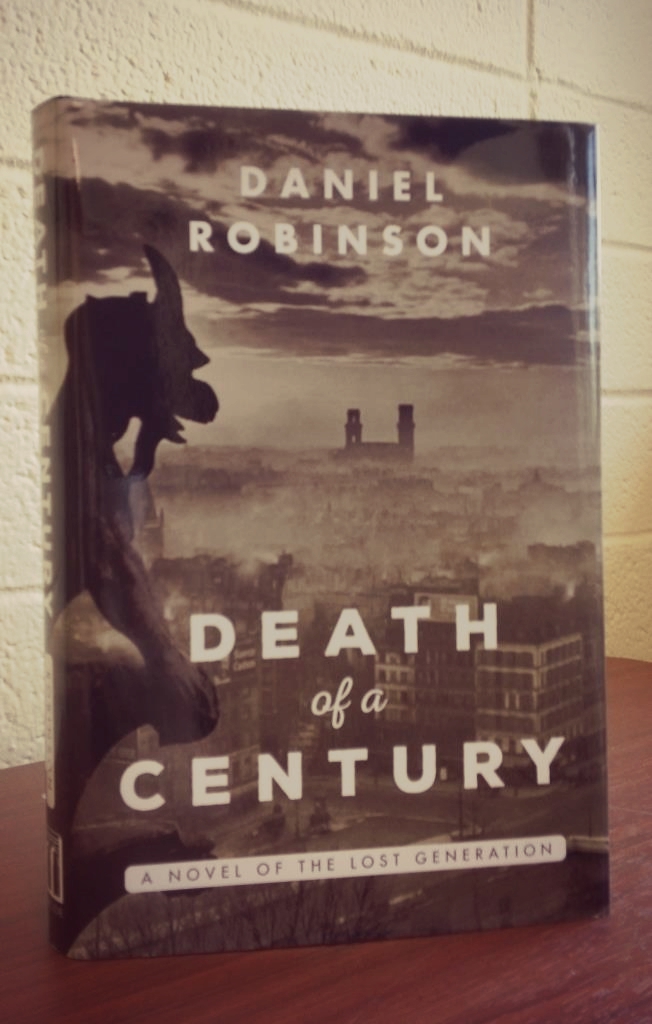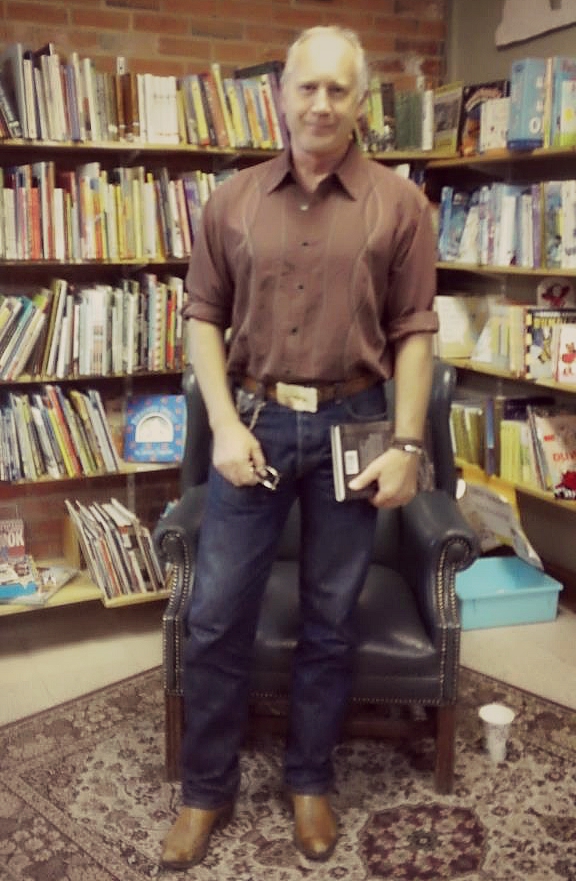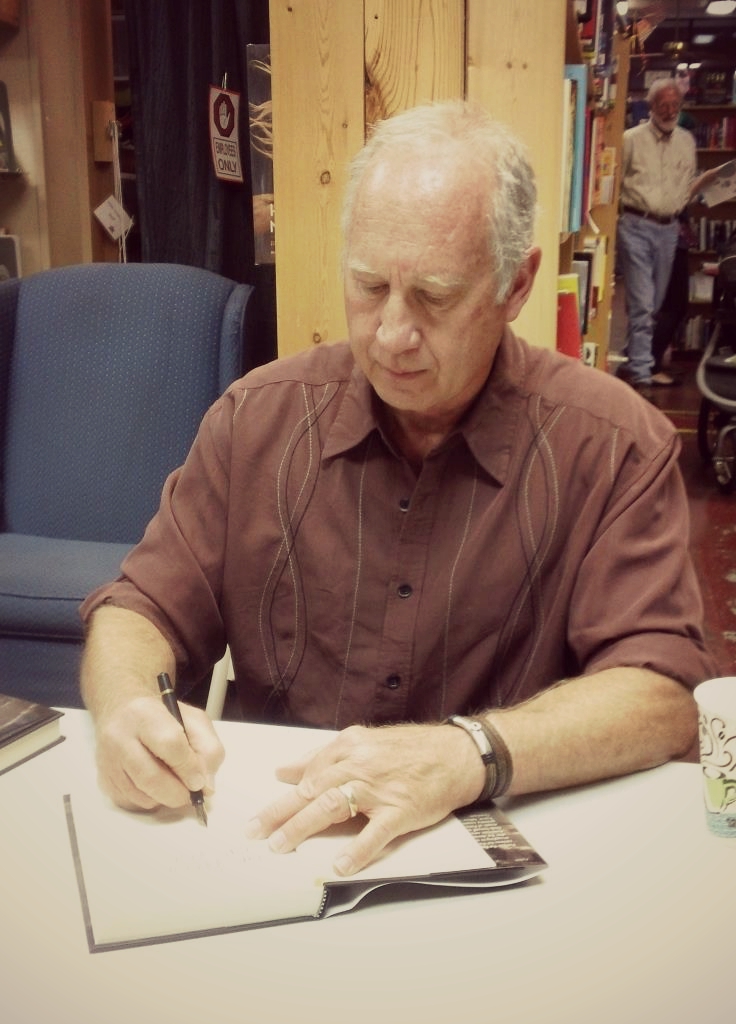On Wednesday, September 2, 2015, Dan Robinson read from his latest novel Death of a Century: A Novel of the Lost Generation at Old Firehouse books. Communications intern Ashley Alfirevic attended the reading and had this to share: http://english.colostate.edu/2015/09/reading-dan-robinson/
by Communications Intern Ashley Alfirevic
The comfortable blue armchair in the middle of the Children’s Section at Old Firehouse Books felt like a stark contrast to the reading about to start. Compared to the bright soothing covers on the shelves, the sleek new book jacket of Dr. Robinson’s new novel Death of a Century depicts a gargoyle solemnly watching over a foggy Parisian morning. In between small talk with fellow English students in the audience, I wondered if Dr. Robinson’s own writing would sound like the novels assigned for his “American Prose Since 1900” course that I took with him the fall before. If it did, it would be compelling, fluid, and violent (recalling our disturbing end to the course with Cormac McCarthy’s Blood Meridian).
Though his novel already gave off a decidedly noir vibe, Robinson himself stood before the audience in an open, relaxed manner. With cowboy boots and a classically western appearance, he already looks not quite a part of this century, something he later confirmed when someone asked a question about the setting of his book. “I like the direct world of the twenties and thirties,” he said as he pulled out an ornate pocket watch. “This is how I tell time. I don’t like cell phones.”
A fellow CSU colleague introduced Robinson, commenting on his history of firefighting both literally – flying helicopters over western wildfires – and figuratively – managing to teach and grade students while producing three novels to date. Used to working under pressure, Dr. Robinson defines himself as a “sprint writer.” Being a full-time professor doesn’t leave much time for long-distance writing, not allowing a day or even a few hours at a time to do the work of writing. “I just sit down and get a couple hundred words on the page,” he stated casually. While some of the writers in the room were left in awe of this notion, these moments – some 2,000 hours of moments, to be exact – add up to more than two years of his life.
Before starting, Dr. Robinson explained that each epigraph in Death of a Century comes from the hours of research he conducted for the novel. “Write what you know about versus what you know… it’s about the essences of life,” he mused before quoting Warren G. Harding: “America’s present need is not heroics, but healing… Let’s get out of the fevered delirium of war.”
With that, he continued into the first pages of the book. Stoic protagonist Joe Henry is a veteran and newspaper writer, reporting on World War I battles with a removed sense of scientific observation in order to distance himself from his own painful flashbacks and nightmares. After finding his best friend and fellow veteran Gresham murdered in his home, Joe must flee to Paris when he becomes the prime suspect in the investigation. He must discover who is behind the murders and why they’ve chosen Gresham… and stolen his manuscript.
As he read about, “The rain, steady and loud, [in] feathered rivulets of water down his windshield” (Robinson 9) with the same lilt he read passages of Hammett’s The Maltese Falcon or Hemingway’s “Big Two-Hearted River” to our class, I had to remind myself that this was not (at least, not yet) a classic of the canon. Although, Robinson mentioned, several canon members from the Lost Generation do make cameos in Century. Scott Fitzgerald, Ezra Pound, and Ernest Hemmingway (and his notorious missing valise) all make appearances, though he pointed out that, “the story is not about them.”
The passages selected for the reading previewed a novel full of intrigue, an exploration of the human consciousness rather than a whodunit. “It’s more about the reasons why, not the murder itself,” Robinson comments. Yet despite the thrilling plot line, the glamour of noir, and a prose rooted in classical modernism, I had one simple question on my mind: “When you were teaching our class, you mentioned that your editor wanted to change two words in the text that you made up. Did you get to keep the words?”
He chuckled, “There are now four words. I figured if Faulkner can make up words, so can I.”
And so, with that mystery solved, it was time to delve into the thriller that is Robinson’s Death of a Century: A Novel of the Lost Generation.


